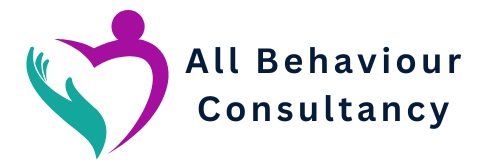
Special Needs State Tuition Structure
Special Needs State Tuition Structure
Navigating the English National Curriculum can feel like a whirlwind, especially for children who encounter learning challenges.
The pace is brisk, the content dense, and for our special education needs (SEN) children, it can be an uphill battle.
Understandably, gaps in understanding emerge, and frustrations mount.
Here at ABC, our mission is to undo those frustrations and make learning fun.
We offer a combination of home sessions and online via Zoom. The assessments often take place in person. From time to time after the assessment, home sessions may also be required for some pupils.

Our team comprises dedicated SEN BCBA teachers who've delved deep into the National Curriculum, crafting a tailored program for children facing cognitive, behavioural, or learning processing difficulties.
Once your child undergoes a comprehensive assessment, they embark on a personalised journey of learning.
Our approach is multi-sensory, engaging, and entirely individualised.
We're on a mission to bridge those knowledge gaps and bolster confidence, ensuring every child strides forward in their educational journey with strength and self-assurance.
Scroll down to see our breakdown of the goals we work towards for the children we work with, and how we decide which learning group is best for them.
If you have any questions at all, please don’t hesitate to contact us:
Here is our ABA Special Needs Tuition structure throughout the ages.
-

Nursery (Ages 3-4):
Literacy:
Fine Motor Skills are the foundation of your child’s development at this age. At school, their teachers will be working on the following turrets:
Communication and Language:
Understand and respond to simple instructions.
Physical Development:
Develop fine motor skills for better control when handling writing tools.
At this stage, your child will be starting to write their own name and work towards recognising and naming some basic letter sounds in the alphabet.
Maths:
Recognise and name numbers up to 5.
Shape, Space, and Measure:
Begin to recognize and describe simple shapes.
-

Reception (Ages 4-5):
Literacy:
Phonics and Letter Formation
Phonics and Reading:
Recognise and name letters of the alphabet.
Develop basic phonemic awareness.
Writing:
Form letters correctly.
Write simple words and short sentences.
Maths:
Numbers: Count reliably up to 10.
Recognize and represent numbers up to 10.
Shape, Space, and Measure:
Compare and order objects based on size.
-

Key Stage 1 (Years 1-2): Age 5 - 6 years old
Literacy
Phonics, punctuation, extended sentences ,sentence structure)
Phonics and Reading:
Achieve fluency in reading simple texts.
Understand and apply phonics knowledge to decode unfamiliar words.
Writing:
Write clearly and coherently, with attention to grammar and punctuation.
Use descriptive language in writing.
Maths :
Numbers: Count in multiples of 2, 5, and 10.
Add and subtract within 20.
Geometry:
Recognise and name common 2D and 3D shapes.
Explore properties of shapes, and relate them to real-world objects.
-

Lower Key Stage 2 (Years 3-4): 7 to 9 years old
Literacy :
Comprehension, different forms of writing (diary, advertisement, letter etc), varied sentence structure and varied syntax and genre.
Reading:
Learning Targets: Read age-appropriate texts with confidence.
Summarise and discuss the main ideas in a text.
Instructional Focus:
Explore a variety of genres, teach strategies for comprehension.
Writing:
Learning Targets: Write for different purposes and audiences.
Use a variety of sentence structures.
Instructional Focus:
Teach genre-specific writing conventions, foster independence in the writing process.
Maths:
Number: Multiply and divide within 100.
Add and subtract with larger numbers, including money
Measurement:
Measure and compare lengths, mass, volume, and time.
-

Upper Key Stage 2 (Years 5-6): 10 to 11 years old
(Text analysis, advanced spelling, varied punctuation, figurative language and style, 11+)
Literacy:
Reading: Read and understand a range of texts, including fiction and non-fiction.
Analyse and discuss the authour's use of language and techniques.
Writing:
Write creatively with a developed voice.
Use advanced vocabulary and literary devices.
Grammar and Spelling: Demonstrate a solid understanding of grammar rules.
Apply spelling rules consistently.
Maths
Numbers: Multiply and divide whole numbers and decimals.
Add, subtract, multiply, and divide fractions
Geometry:
Identify angles, including those at a point and vertically opposite angles.
Classify shapes based on their properties.
Statistics:
Interpret and construct a variety of graphs.



